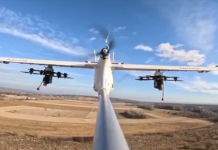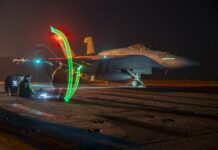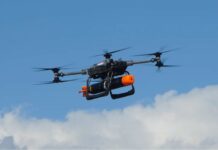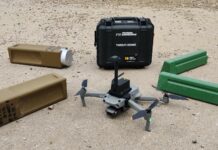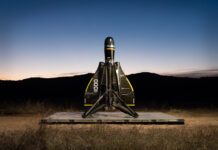With the understanding that the Russo-Ukrainian War has transitioned into a protracted phase and that the Russian army’s command has adopted a war of attrition strategy, the capabilities of the Russian Military Industrial Complex (MIC) have become one of the central issues among others that allow for assessing the course and prospects of the armed conflict. A lack of clear understanding of what, how much, and for how long the Russian military-industrial complex (MIC) can produce has caused strategic uncertainty at the highest levels in the West.
At the outset, it is important to stress that much of the key information regarding the Russian MIC has always been highly classified. While some data was publicly available before 2014, the vast majority of information has remained confidential since the times of the USSR. This applies, for instance, to the so-called ‘mobilisation industrial capacity’ of the MIC, or, simply put, mothballed plants, production lines, and other reserves.
Since 2014, when relations between Russia and the West became tenser, Russia gradually began to classify more and more sensitive information. In 2016, for example, Russian plants ceased publishing annual financial data.[1] The share of classified state expenses in the Federal Budget has also been growing since 2014, getting to 21.7% in 2016, and reaching an all-time high of 22.6% by 2023. It was forecast by RBK that the share of classified state expenses might grow to 26.8% (RUB 9.8 trillion) in 2024.[2]

Credit: RecoMonkey
Furthermore, in February 2023, the State Duma of the Russian Federation passed a law allowing for suspension of the publication of any statistical information.[3] Prior to that, in April 2022, the Federal Customs Service of the Russian Federation had suspended the publication of export-import statistics. Since then, a substantial share of statistical information – such as data on industrial output, export-import operations, and demographics – has been deemed sensitive by Russian officials, resulting in its suspension, delayed release, or publication in a generalised form.[4] The most recent instance occurred in July 2024, when the Central Bank of the Russian Federation decided to suspend the publication of daily statistics on the over-the-counter (OTC) currency market.[5] The reason for this measure, as reported by TASS, was “limiting the pressure of sanctions.”[6]
The same limitations apply to any official statements released by enterprises of the Military-Industrial Complex or issued by high-ranking officials.
In other words, external observers, regardless of their allegiance or political stance regarding the conflict, are operating in an increasingly opaque and nearly impenetrable environment. This is not surprising, given that Russia is a country at war. However, it is crucial to consider the scale and intensity of the efforts Russian authorities apply to information security, which results in a scarcity of information available for analysis.
Estimating the figures
Since the nature of the Russo-Ukrainian conflict has evolved into a war of attrition with tube and rocket artillery playing a leading role, the capacity of the Russian Military-Industrial Complex (MIC) to produce artillery shells and rockets has become a critical concern for analysts and intelligence agencies. Additionally, it serves as a significant indicator for assessing the capabilities of the Russian MIC.
Most estimates rely on available pre-war data, with further calculations based on official statements made by Russian military and political leadership. Some of these estimates suggest that between 2014 and 2022, the production output of ammunition for tube and rocket artillery experienced steady growth, reaching as many as 733,260 shells and 15,727 rockets (748,987 in total) in 2021.[7]
It was reported that as of 1 January 2013, the Russian Armed Forces possessed a surplus of 3.7 million tonnes of ammunition of all types, including 2.6 million tonnes of serviceable ammunition and 1.1 million tonnes of ammunition requiring repairs.[8]
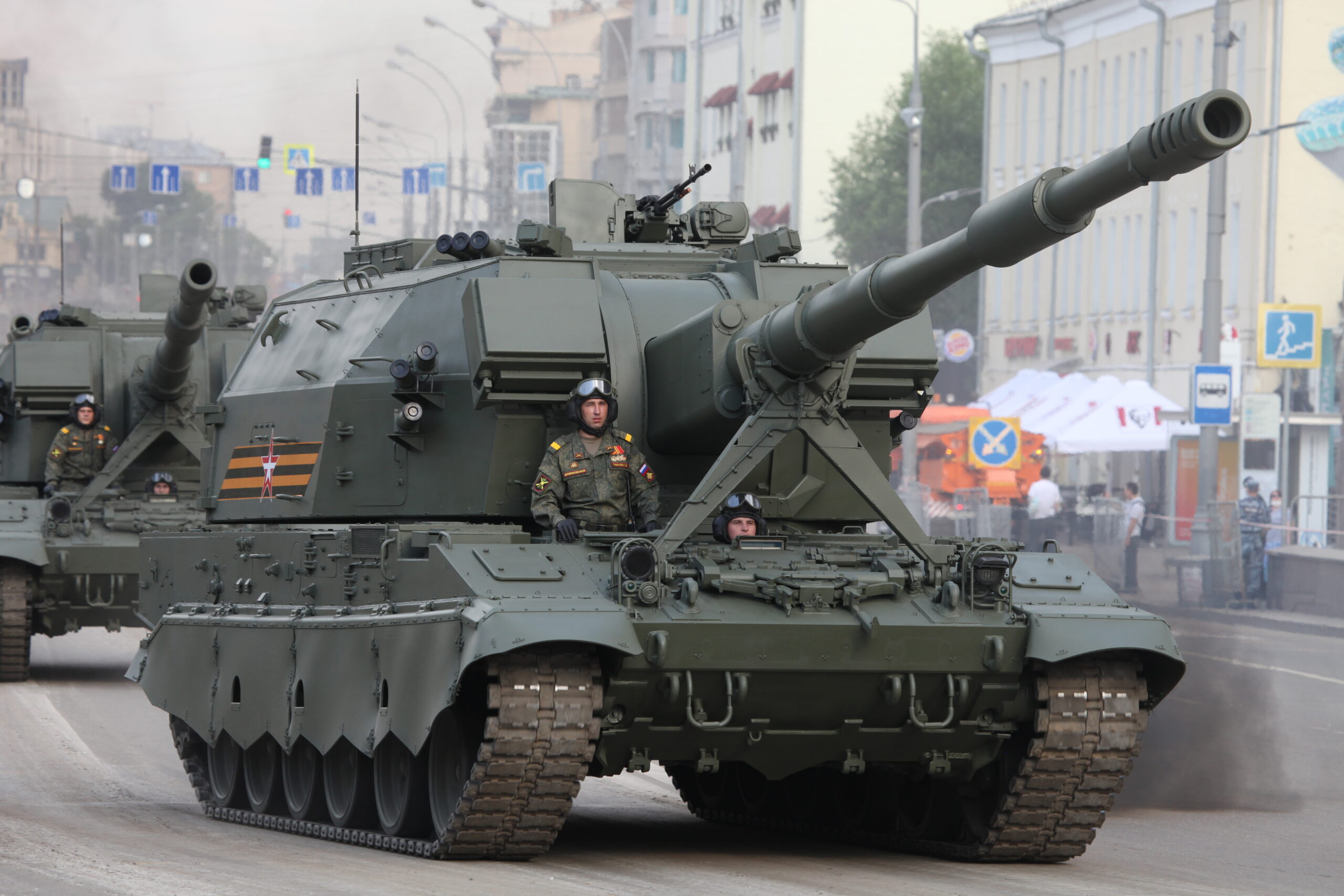
Credit: RecoMonkey
While it is impossible to break down these numbers by type of ammunition, it is possible to estimate the approximate amount of available artillery ammunition using 152 mm rounds as a reference.
Given that the weight of a standard 152 mm artillery projectile is 43 kg and a full charge cartridge case is 15.4 kg, totalling approximately 60 kg[9],[10], one million tons of ammunition would be equivalent to roughly 16.6 million 152 mm artillery rounds. Based on these calculations, it can be concluded that in 2013, the Russian Army had a surplus of at least 43.3 million serviceable artillery rounds, plus another 18.3 million units requiring repairs.
The pre-war capacity to repair unserviceable rounds was estimated at 300,000 per year in 2020.[11] In other words, the Russian Army would require 61 years to repair all the available artillery projectiles in its arsenals, assuming no additional assistance from the industry was provided.
Even considering that this data is 10 years old and may be inaccurate, it is reasonable to suggest that at the beginning of the Russo-Ukrainian conflict in 2022, Russia had a surplus of tens of millions of rounds for tube and rocket artillery, and its production output was already increasing.
These estimates, based on publicly available data, likely form the basis of many official statements and assessments regarding the capabilities of the Russian MIC.
For instance, in July 2023 Admiral Sir Tony Radakin speaking to The Financial Times, suggested that in 2022 Russia “fired 10mn artillery shells but at best can produce 1mn shells a year. It has lost 2,500 tanks and at best can produce 200 [new] tanks a year”.[12]
In February 2024, RUSI confirmed the figure for 2022 and estimated the ammunition production capacity for 2023 at 1.3 million 152mm shells and 800,000 122mm shells (2.1 million in total). Interestingly, the authors cited the Russian Ministry of Defence (MoD) and the Military-Industrial Complex (MIC) as sources for this data. However, throughout the course of the war, neither the Ministry of Defence nor any representatives of the MIC have released any statements, let alone any industrial requirements, containing specific figures regarding military production.[13]
The RUSI report was followed by another, released by the Estonian Foreign Intelligence Service. The authors of the report suggested that the Russian military industry surged the production and refurbishment of artillery rounds from 400,000 in 2021 to 3-4 million rounds in 2023, with the total production output for 2024 forecast at 4.5 million rounds.[14]
Finally, in late May 2024, Sky News forecast that the Russian MIC would produce and refurbish 4.5 million artillery rounds, citing research on artillery rounds conducted by the consulting firm Bain & Company.
| Table 1: Russian ammunition production estimates (per year) | |||||
| Source | 2020 | 2021 | 2022 | 2023 | 2024 |
| Eurasia Daily Monitor, Jamestown.com | 748,987 | ||||
| Radakin | 1 million | ||||
| RUSI | 1 million 152mm | 2.1 mil, 122 and 152 mm | |||
| Murakhovsky | 300,000 (refurbished) | ||||
| Estonian Foreign Intelligence Service | 400,000 (produced and refurbished) | 600,000 (produced) | 3-4 million
(produced and refurbished) |
4.5 million | |
| Sky News, Bain & Company | 4.5 million (manufactured and refurbished) | ||||
What conclusions can be drawn from these figures and estimates?
Firstly, a stable upward trend in artillery munition production is evident, as indicated by statements from state agencies, officials, and expert groups. Although there is significant variation within the estimated figures, there is general agreement among observers that production output is increasing, with estimated figures roughly doubling each year.
Secondly, despite many negative forecasts made in 2022 and early 2023 regarding sanctions crippling Russia’s ability to produce weapons, the country has entered the third year of a large-scale war with increasing production output and a growing army.[15] It is possible that the ammunition sector is not an isolated example of industrial growth, but can serve as an indicator of the wider capabilities of Russia’s entire military-industrial complex (MIC).
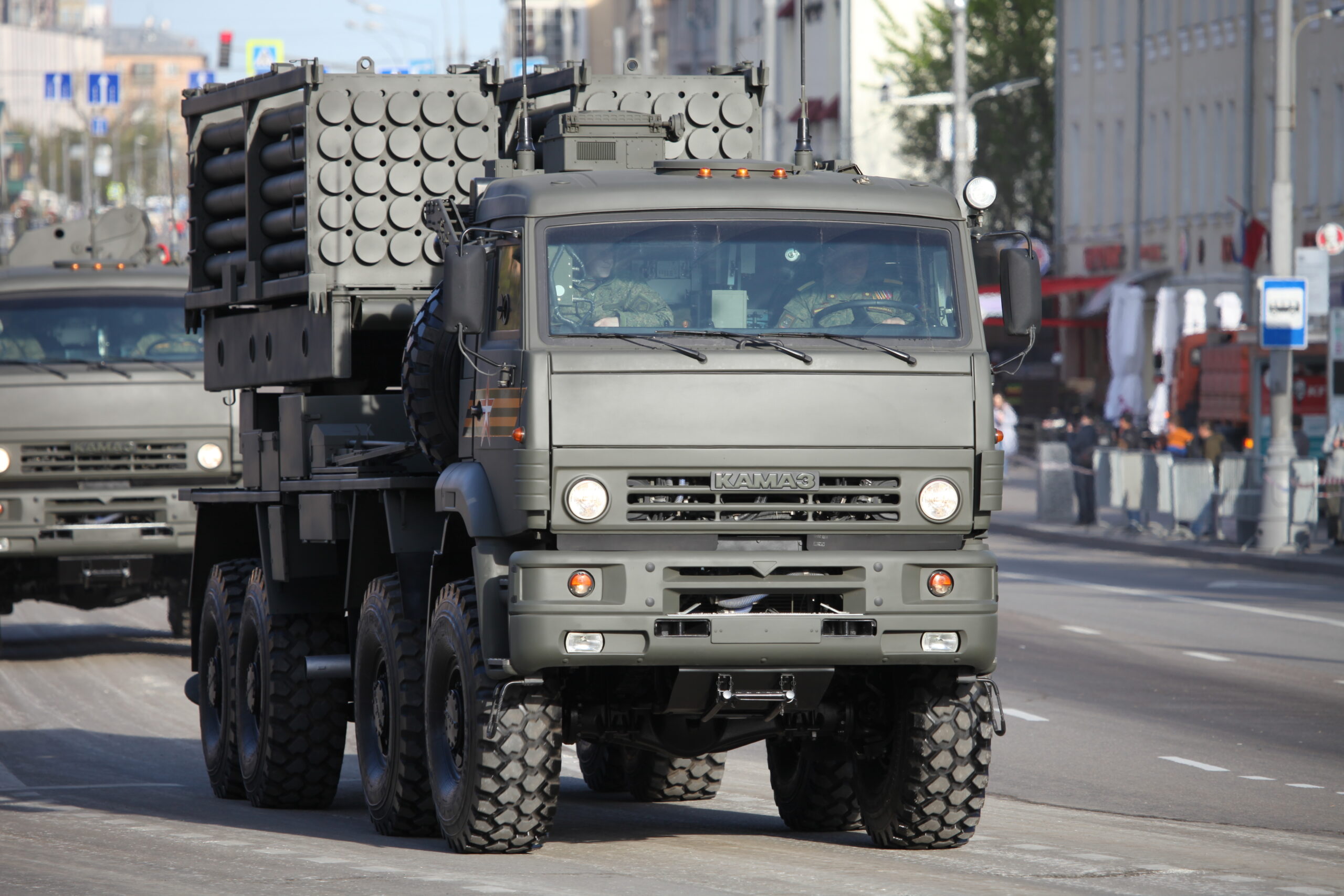
Credit: RecoMonkey
Third, it is also reasonable to suggest that the strategy of attrition became a deliberate choice, following the highly-troubled Russian offensive efforts of 2022 and early 2023, and to an extent reflects the type of warfare the Russian economy and industry have been preparing for. On the latter point, the Russian sanctions-proofing and import substitution efforts witnessed since 2014 were probably not directly intended to facilitate a long-term, high-intensity war, but rather to weather sanctions in case of a major political fallout with the West, as did indeed occur in 2022. However, both have made it easier for Russia to conduct a long war as a related benefit, though many supplemental measures were needed on top of the previous measures.
The gears powering Russia’s war machine
The Russian military industry possesses three critical advantages that bolster Russia’s war effort: vast reserves, centralised administration, and the ability to set strategic priorities for military production. Some of these advantages have existed for centuries, while others result from actions taken by the Russian military and political leadership before and during the War in Ukraine.
Hidden reserves
The Russian arms industry was already on the rise by 2022, with an increasing flow of state investments being allocated to the sector. By September 2022, the Russian MIC began a gradual transition to a ‘special mode’ of operation, which included overtime work, three-shift production in some sectors, longer shifts, and the delaying or cancelling of days off and vacations, among other measures.[16]
One of the most significant decisions aimed at boosting the production output of the Russian MIC was made in October 2023, when the Russian government allowed the military industry to use all available resources, including the so-called ‘mobilization capacities’ of the industry.[17] In other words, the Russian MIC was permitted to utilise previously mothballed industrial capacity, such as facilities, surplus raw materials, production lines, etc.
These measures were further supported by attracting and hiring a substantial workforce. In February 2024 Russian President Vladimir Putin said that ‘the national defence industry has created more than 520,000 new jobs over the last eighteen months,’ referring to the period between 2 August 2022 and 2 February 2024.[18]
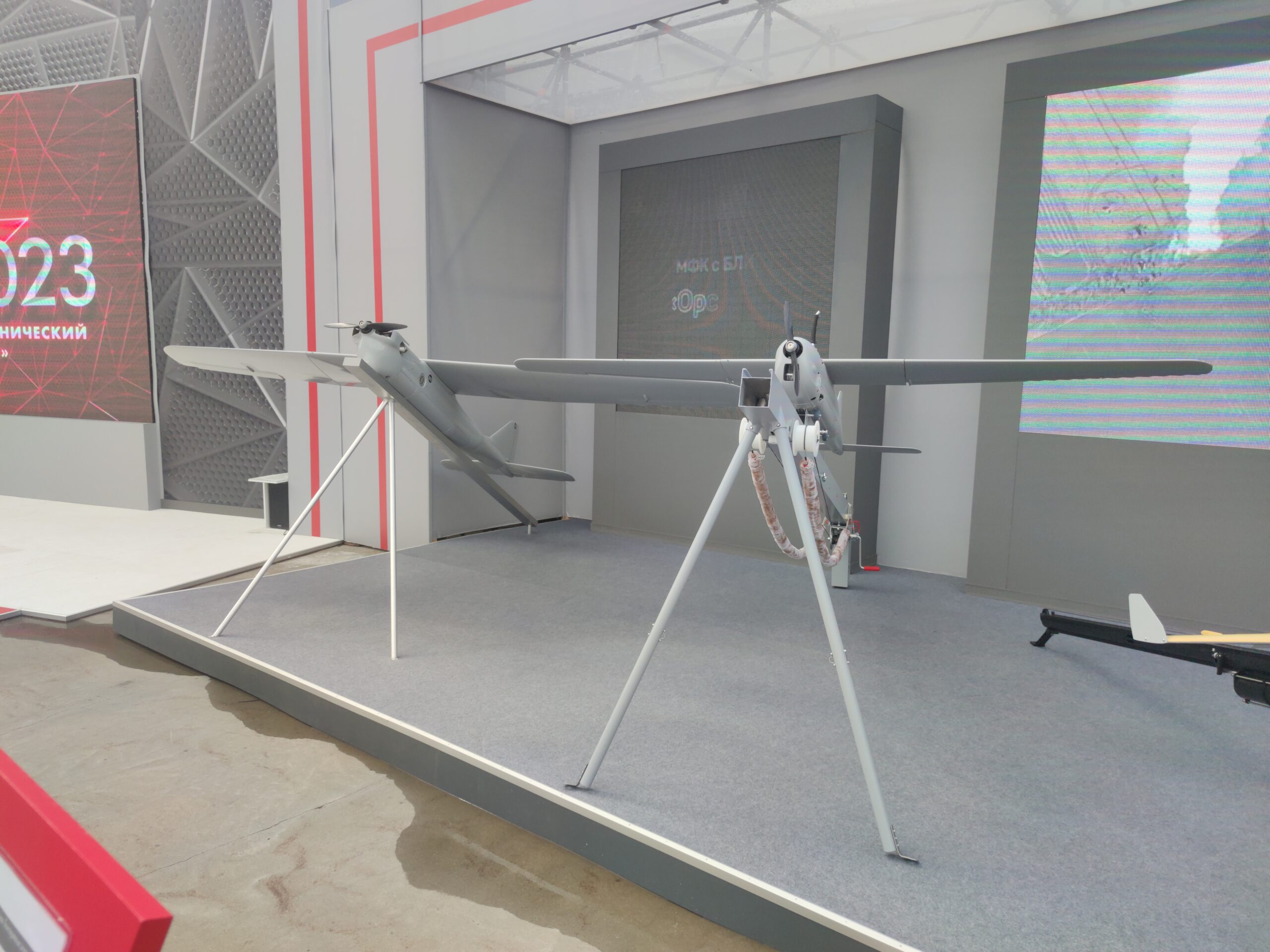
Credit: Alex Orlov
By engaging these reserves, the Russian MIC likely saved time and achieved numerical and financial advantages over the arms industry in Europe and the US, which, according to some sources, still face difficulties in increasing their production capacity.[19]
It is important to note that engaging these reserves would have been ineffective without preparations initiated before the war, and was undertaken in parallel with the ongoing modernisation and expansion of the military industry.
Centralisation and Control
Centralisation and state control over the military industry, as well as other strategic industrial sectors, have probably been the defining features of the Russian MIC since the time of the Russian Empire and were further developed during the Soviet period. After the collapse of the USSR and the transition from a socialist economy, many enterprises of the Russian MIC became privately owned. However, over the last 20 years, the state has gradually regained control over the majority of strategic military enterprises. Since the beginning of the conflict in Ukraine, the leadership of the Russian MIC has moved toward even greater centralisation. Industrial clusters with clearly defined specialisations—such as engines, armoured vehicles, ammunition, and artillery systems—are being created. This structure allows for more efficient resource allocation, as well as focused development and production of essential military technologies and equipment.

Credit: Alex Orlov
Among recent examples is the transfer of fourteen ammunition and special chemical plants under the management of the Rostec Corporation. The decree was signed in January 2023 by Prime Minister of the Russian Federation, Mikhail Mishustin.[20] In April 2023, Rostec announced plans to transfer some assets of Uralvagonzavod (Plant No. 9, TsNII Burevestnik, and Uraltransmash) to the Tekhmash concern in order to consolidate the manufacturers of artillery systems and ammunition for these systems under one roof.[21]
The primary aim of these measures is to enhance controllability and resource management to improve the efficiency of the entire military-industrial system. Available information suggests that at least some of these measures have yielded positive results.
The figures provided by Commander-in-Chief of the Armed Forces of Ukraine (AFU), Col Gen Oleksandr Syrskyi, in July 2024, and by the Russian MoD in December 2023, may be debatable. However, as in case of artillery ammunition production discussed previously, the upward trend is evident. According to Syrskyi, “Since 2022, the number of Russian tanks has ‘doubled’—from 1,700 to 3,500. Artillery systems have tripled, and armoured personnel carriers have increased from 4,500 to 8,900.”[22] Syrskyi’s figures are summarised in Table 2, alongside figures reported by TASS.[23]
| Table 2: Key Military Equipment Deliveries | |||
| Platform | RU force estimate, 2022 [Syrskyi] |
New/refurbished production 2023 [TASS, RU MoD] |
RU force estimate, 2024 [Syrskyi] |
| Tanks | 1,700 | Over 1,500 | 3,500 |
| Various Armoured Fighting Vehicles (AFVs) | 4,500 | Over 2,200 | 8,900 |
| Transport vehicles (unarmoured) | n/a | 10,600 | n/a |
| Transport vehicles (armoured) | n/a | Over 1,400 | n/a |
| Uncrewed Aerial Vehicles (UAVs) | n/a | Over 22,000* | n/a |
| Artillery | Unknown | Over 1,400 | “Tripled” |
| Notes: *Does not include commercial off-the-shelf (COTS) UAVs made by the private ventures, volunteers and donated to the Army. These figures would likely significantly increase the overall number delivered. |
|||
Even though a large portion of Russian equipment delivered has consisted of older models taken from storage depots and later refurbished, the numerical growth is still quite impressive. Additionally, these figures suggest that many observers likely inflated the estimated losses of Russian equipment, while the production capabilities of the Russian MIC were, in contrast, underestimated. An additional factor which may explain some of the aforementioned discrepancy is underestimating how much damaged and abandoned equipment was recovered and returned into service. Since individual tanks and AFVs are typically not tracked, damaged/abandoned vehicles which were returned to service and then subsequently damaged/destroyed later would likely have resulted in the phenomenon of ‘double counting’ – thereby artificially inflating loss figures.
Setting Priorities
Strategic prioritisation has ensured that the most crucial needs are met swiftly. Vivid examples can be found among the programs for new tube and rocket artillery systems. In October 2023, Rostec reported the completion of state trials for the newest 2S35 Koalitsiya-SV self-propelled howitzer (SPH).[24] In December 2023, Sergey Chemezov, the CEO of Rostec Corporation, announced the start of low-rate serial production of the Koalitsiya-SV. Then in late December 2023 or January 2024, the first production batch was handed over to the army.[25] It is important to note that, at this time, nothing is known about the fate of the 2S35-1 Koalitsiya SV-KSh, the wheeled version of the Koalitsiya SPH.
Similar progress can be observed with other artillery and special-purpose systems, such as the2S40 Floks 120 mm self-propelled mortar, the 2S41 Drok 82 mm self-propelled mortar, the ISDM Zemledeliye 122 mm remote mine-laying system, the TOS-2 Tosochka 220 mm thermobaric multiple rocket launcher (MRL) and the 2S43 Malva 152 mm SPH.
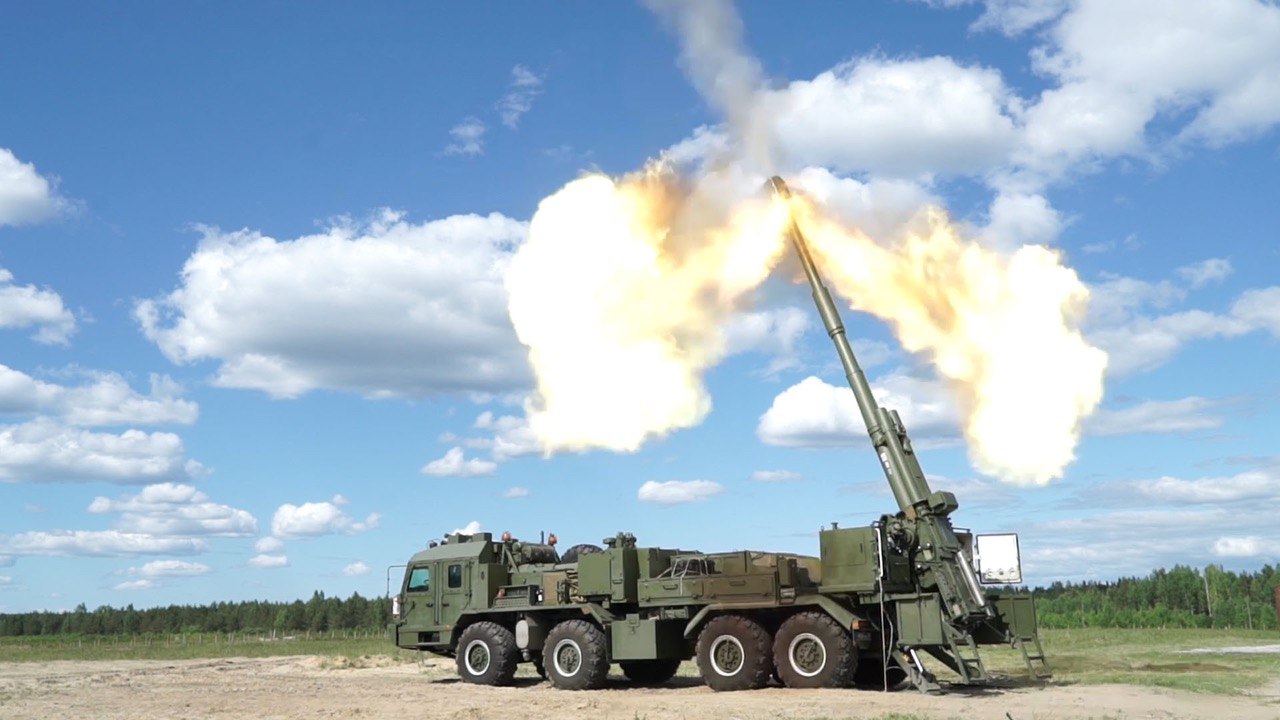
Credit: Rostec
In the case of the latter, the expedited timeline is evident. The first conceptual drawings were presented to the public in October 2019, and then the prototype vehicle was publicly displayed in July 2020. In July 2023, the Malva had completed state trials.[26] In October 2023, Rostec delivered the first production batch to the army, and it appears to have seen its first combat use in November 2023. Footage of the Malva in combat in Ukraine was released in June 2024, and on June 25, 2024, the second batch of serially produced 2S43 Malva SPHs was delivered.[27]
Furthermore, upgrades appear to be in the pipeline. In August 2023, Rostec announced the development of a new version of the Malva SPH with an increased firing range, along with a new range artillery ammunition, including guided natures.[28],[29] In April 2024, Bekhan Ozdoev, Industrial Director of Weapon Systems at Rostec State Corporation, announced that the new version of the TOS-3 Drakon thermobaric MRL was already in development and that the prototype has already been delivered.[30] This prototype was then publicly displayed on 3 June 2024 at an event dedicated to the 45th anniversary of the formation of the 1st Guards Mobile Nuclear, Biological, and Chemical (NBC) Protection Brigade.
These facts reveal the system behind many decisions determining the prioritisation process:
Firstly, after the army identifies the urgent needs, the MIC offers systems based on serially-produced components that share commonality with already in-service systems. For example, the Malva shares the same 152 mm 2A64/L47 gun as the Msta-SM2 SPH. This allows for streamlining development and testing, with systems brought to serial production within 4-7 months instead of 5-8 years.[31]
In some cases, when a cheaper system is unavailable or a critical capability is needed, the army opts for a modern, technically sophisticated, and more expensive system, such as the Koalitsiya-SV. However, in the vast majority of cases, the MoD opts for simpler and cheaper systems that are available for mass production on an expedited timeline. A further example here is the Russian MoD opting for modernisation of the T-72/T-80/T-90 families to the T-72B3M/T-80BVM/T-90M standards over the more modern T-14 Armata design.
Secondly, this approach enables the production of more units more quickly and at a lower cost than with more sophisticated and low-commonality equipment. To some extent, it helps industry avoid the setbacks that are inevitable when adopting new products for mass production.
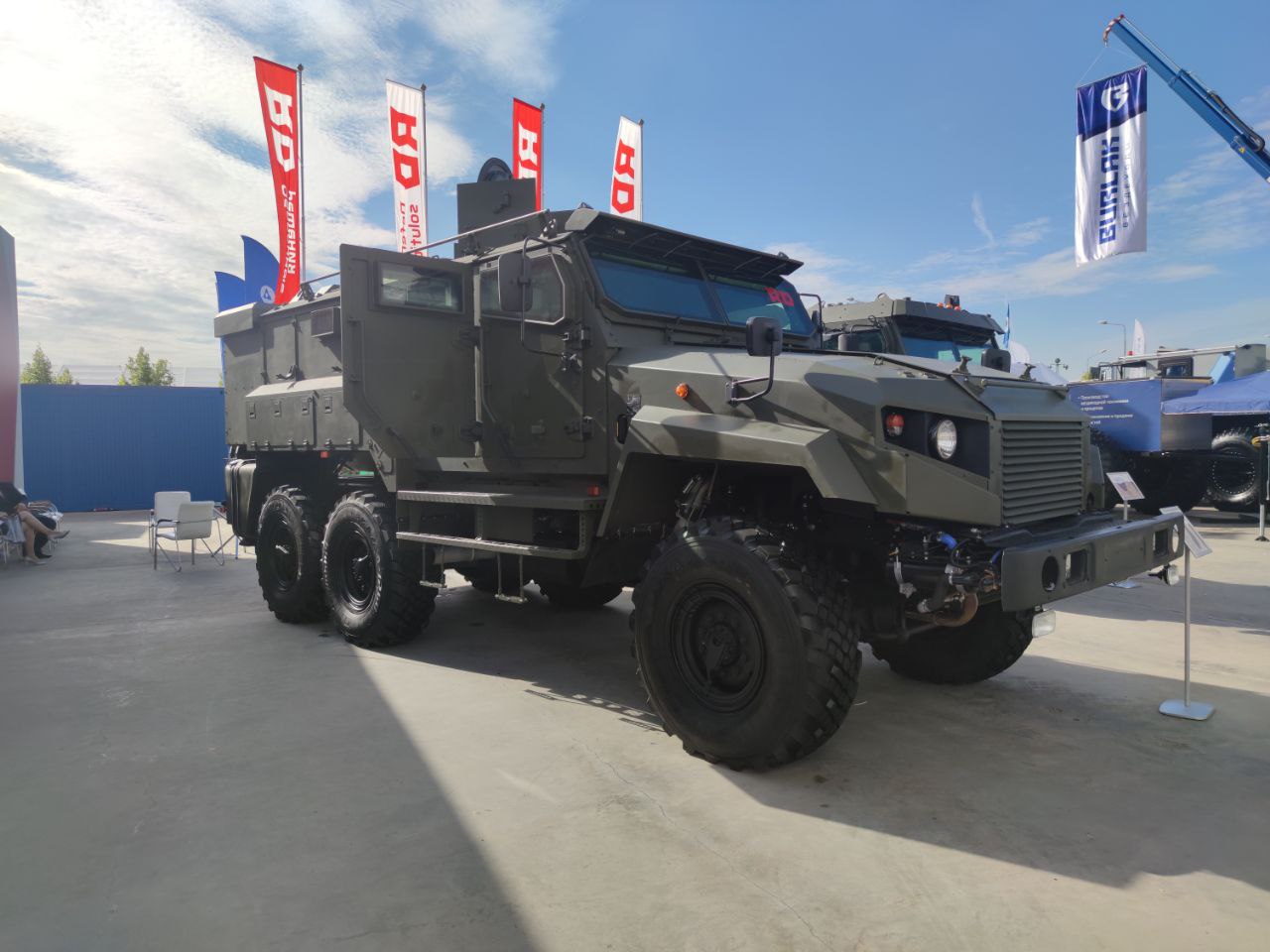
Credit: Alex Orlov
Additionally, industry can react quickly to feedback and new requirements from the Army, streamlining continuous modernisation. In certain cases, by the time the MoD receives the first production batch, the MIC has already initiated R&D projects on the next generation of weapon systems, as seen with the improved Malva SPH and the TOS-3 Drakon.
Finally, the key benefit to the Army is that, within fairly short timescales, it receives systems it is more familiar with, that are relatively easy to maintain, and integrate into the existing organisational structure, and require relatively little effort for training or retraining personnel.
Planning for a long war
Measures undertaken by Russian military and political leadership between 2014 and 2022 suggest that a protracted conflict was likely one of the scenarios considered by the Russian military and political leadership as early as the beginning of the 2010s. Starting in 2014, many preparations were initiated to decrease the exposure of the economy and industry to external shocks, including the technical re-equipping of the military industry, political agreements with allied or neutral countries, along with economic measures aimed at increasing sustainability and resilience.
These measures, along with additional supplemental measures taken since 2022, have allowed the country to effectively weather Western sanctions and ensure the relative stability of the economy. Other measures have facilitated the continuation of international trade and the import (including through smuggling operations via front companies in third countries) of technologies and materials needed for Russia’s military industry. The details of these measures extend far beyond the scope of this text. However, thus far the Russian economy has proven itself resilient, resourceful, relatively self-sufficient, and capable of generating sufficient resources to sustain over 2.5 years of high-intensity warfare while operating under severe sanctions.
What is the state of the Russian MIC in 2024?
Firstly, it is evident that Russia has a relative advantage in mass production of critical materiel over the rate at which Ukraine can obtain it (whether via domestic production or deliveries from allied countries), with Russian output continuously growing. Secondly, Russia does not seem to have difficulties in manufacturing and deploying at least some types of advanced systems and technologies. One notable example is Russia’s UAV industry. This was very small prior to February 2022, yet since then the production of loitering munitions and reconnaissance UAVs has surged, notably in late 2022 and throughout 2023, and remains high to this day.
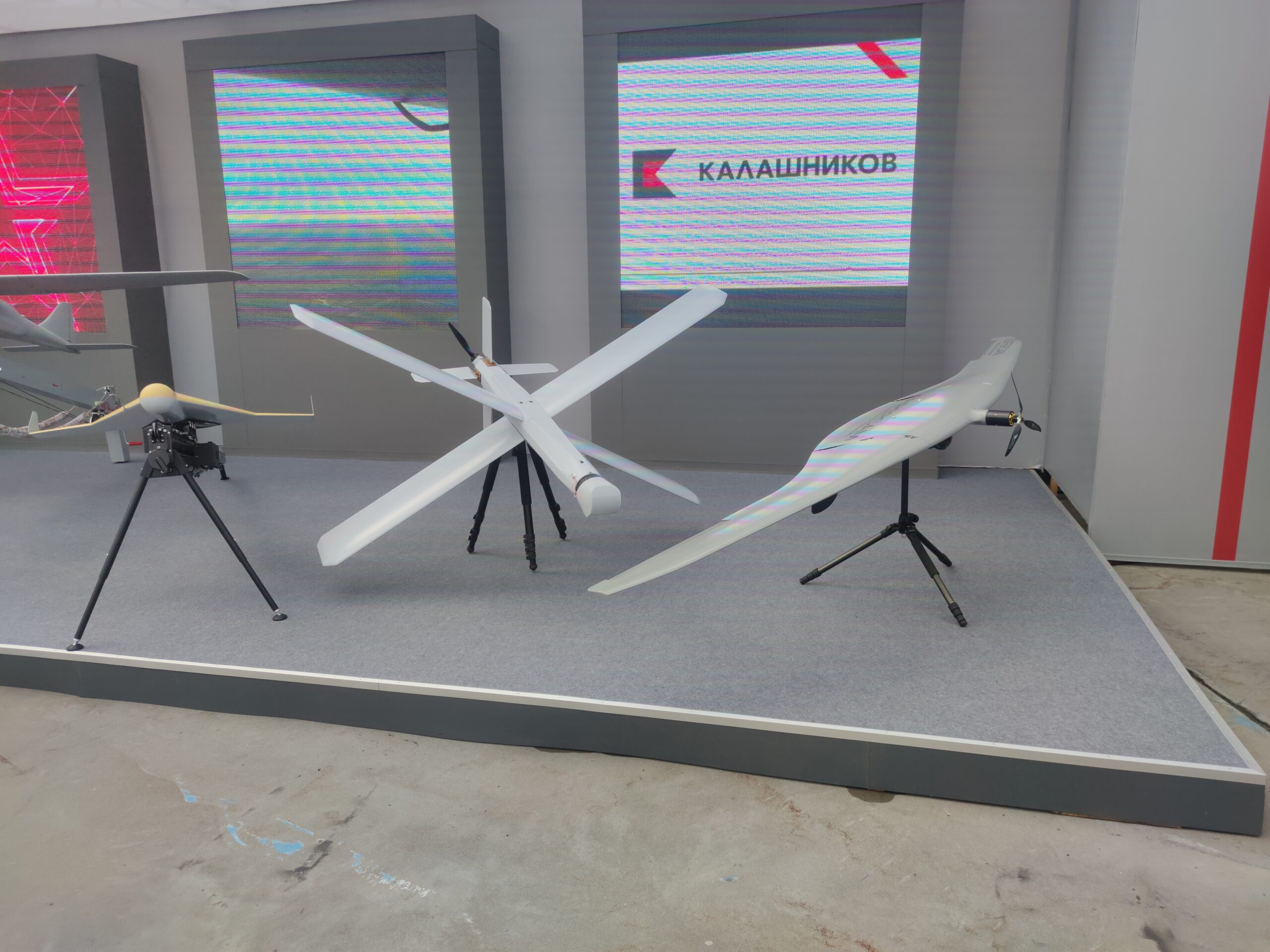
Credit: Alex Orlov
The exact production figures are not publicly available and remain very hard to estimate. However, given the additional volume of industrial capacity (both mobilised and newly-established) deployed between late 2023 and the first half of 2024, the level of production output is likely higher than was expected before the war or in 2022-23.
It is worth noting is that the modern Russian MIC was built on the remnants of the Soviet military industry, which was designed to operate under pressure and produce huge volumes of equipment in a protracted conflict with NATO. While much of this was either unused, neglected or lost in the 1990s and early 2000s, the 2010s saw significant recapitalisation of this dormant potential. While output figures are in key sectors such as new-build tank production are still far below Soviet levels, nonetheless, this still leaves Russia with fairly high output for many key systems compared to many other countries. This relative advantage over Ukraine has most evidently been leveraged through Russia’s adoption of an attritional warfare strategy in Ukraine.
There are, however, many challenges facing the Russian MIC, such as shortage of skilled workers, weaknesses in some areas of high-tech military production, disruption of supply chains and others. Whether the Russian military industry can overcome them remains to be seen.
Alex Orlov
[1] Russia Struggles to Maintain Munition Stocks (Part Two). Publication: Eurasia Daily Monitor Volume: 19 Issue: 186, 14 December 2022. https://jamestown.org/program/russia-struggles-to-maintain-munition-stocks-part-two/
[2] The closed portion of the budget reached 22.6%. The share of closed expenditures in the federal budget grew to 22.6% in 2023. 19 April 2024
https://www.rbc.ru/economics/19/04/2024/662101959a7947ca5f28e3fc
[3] The State Duma of the Russian Federation allowed the suspension of the publication of statistics. 22 February 2023
https://www.dw.com/ru/gosduma-rf-razresila-priostanavlivat-publikaciu-statistiki/a-64787150
[4] The Customs Service has temporarily stopped publishing import and export statistics. 21 April 2022
https://www.forbes.ru/biznes/463365-tamozna-vremenno-ostanovila-publikaciu-statistiki-po-importu-i-eksportu
[5] The Central Bank will stop publishing daily statistics on the over-the-counter foreign exchange market. 15 July 2024
https://www.vedomosti.ru/investments/articles/2024/07/15/1050142-tsb-perestanet-publikovat-ezhednevnuyu-statistiku-vnebirzhevogo-valyutnogo-rinka
[6] The Bank of Russia suspends publications of daily statistics of the over-the-counter (OTC) currency market for purposes of limiting the sanction pressure. 15 July 2024
https://tass.com/economy/1817225
[7] Russia Struggles to Maintain Munition Stocks (Part Two). Publication: Eurasia Daily Monitor Volume: 19 Issue: 186, 14 December 2022. https://jamestown.org/program/russia-struggles-to-maintain-munition-stocks-part-two/
[8] https://t.me/Viktor_Murakhovskiy/398
[9] Projectile and Warhead Identification Guide. Foreign. March 1994. pp 2-111.
[10] Jane’s Ammunition Handbook, 2002.
[11] https://t.me/Viktor_Murakhovskiy/398
[12] Russia has lost half its combat capability in Ukraine, says UK armed forces chief. 4 July 2023 https://www.ft.com/content/8cd1c388-6fb9-497b-a8a9-14b6ea21ede2
[13] Russian Military Objectives and Capacity in Ukraine Through 2024. 13 February 2024
https://www.rusi.org/explore-our-research/publications/commentary/russian-military-objectives-and-capacity-ukraine-through-2024
[14] International Security and Estonia 2024, Report. 13 February 2024
https://t.co/J6VMUUqLzt
[15] Russia Is Running Out of Fresh Ammo and May Need to Use 40-Year-Old Shells. 12 December 2022. https://www.military.com/daily-news/2022/12/12/russia-running-out-of-fresh-ammo-and-may-need-use-40-year-old-shells.html
[16] Employees of defence enterprises may be required to work overtime. 9 September 2022. https://www.pnp.ru/economics/sotrudnikov-oboronnykh-predpriyatiy-mogut-obyazat-rabotat-sverkhurochno.html
[17] Shoigu: The government has granted defence enterprises the right to utilize all reserves. 17 October 2023.
https://tass.ru/armiya-i-opk/19034111
[18] Russian defence industry creates over 520,000 new jobs in 18 months — Putin. 2 February 2024. https://tass.com/defense/1740983
[19] Russia is producing artillery shells around three times faster than Ukraine’s Western allies and for about a quarter of the cost. 26 May 2024.
https://news.sky.com/story/russia-is-producing-artillery-shells-around-three-times-faster-than-ukraines-western-allies-and-for-about-a-quarter-of-the-cost-13143224
[20] Rostec will incorporate 14 ammunition and special chemical plants. 4 January 2023. https://aif.ru/politics/russia/v_rosteh_voydut_14_zavodov_boepripasov_i_spechimii
[21] Rostec will consolidate artillery plants under the “gun-to-shot” system. 18 April 2023.
https://www.rbc.ru/business/18/04/2023/643d41d39a7947b208aeab58
[22] ‘I know we will win – and how’: Ukraine’s top general on turning the tables against Russia. The Guardian.
https://www.theguardian.com/world/article/2024/jul/24/i-know-we-will-win-and-how-ukraines-top-general-on-turning-the-tables-against-russia
[23] In 2023, the Russian Armed Forces received more than 1,500 tanks and 22,000 drones. 29 December 2023
https://tass.ru/armiya-i-opk/19650835
[24] The newest self-propelled howitzer ‘Koalitsiya’ has passed state trials.
https://tass.ru/armiya-i-opk/19070095
[25] Sergey Chemezov: The technological superiority of the West in the military sphere is a myth.
https://rostec.ru/news/sergey-chemezov-tekhnologicheskoe-prevoskhodstvo-zapada-v-voennoy-sfere-mif/?sphrase_id=5043001
[26] Malva SPH has completed state trials.
https://rostec.ru/news/rostekh-zavershil-gosispytaniya-kolesnoy-gaubitsy-malva/?sphrase_id=4981075
[27] Rostec announced the delivery of a batch of the newest wheeled howitzers ‘Malva’ to the Russian Armed Forces. 25 June 2023
https://tass.ru/armiya-i-opk/21191289
[28] Rostec will develop a variant of the ‘Malva’ wheeled howitzer with an increased firing range. 14 August 2023
https://tass.ru/ekonomika/18501307
[29] Bekhan Ozdoev: “We are celebrating Weapons Day in excellent shape.”
https://rostec.ru/news/bekkhan-ozdoev-den-oruzheynika-otmechaem-v-otlichnoy-forme/
[30] Rostec is creating a tracked flamethrower system, TOS-3, with an extended firing range. 8 April 2024. https://tass.ru/armiya-i-opk/20473031
[31] Minister of Defense of the Russian Federation, General of the Army Sergey Shoigu, at an expanded meeting of the Russian Ministry of Defense Board. 19 December 2023. https://t.me/mod_russia/33726






